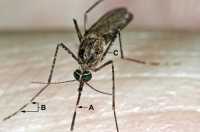Author Interviews, Diabetes, Sugar, Weight Research / 24.02.2021
State Preemption Laws Threatens Local Ability to Implement Sugar-Sweetened Beverage Taxes
MedicalResearch.com Interview with:
Eric Crosbie, PhD, MA
Assistant Professor
School of Community Health Sciences
Ozmen Institute for Global Studies
University of Nevada Reno
MedicalResearch.com: What is the background for this study?
Response: My colleague Dr. Laura Schmidt and I established a framework for studying preemption (when a higher level of government limits the authority of lower levels to enact laws) by studying the history of state preemption of local tobacco control policies in the U.S., which we published last year (2020) in AJPH. We noticed the same strategies that the tobacco industry employed were now being used by the beverage industry to suppress local taxation policies on sugar sweetened beverages (e.g. soda, coffee drinks, energy drinks, etc). We used this preemption framework to publish a new study this year in AJPH that analyzed state preemption of local sugar sweetened beverage taxes in the U.S. (more…)







 Leighton Ku, PhD, MPH
Professor, Dept. of Health Policy and Management
Director, Center for Health Policy Research
Milken Institute School of Public Health
George Washington University
Washington, DC 20052
MedicalResearch.com: What is the background for this study?
Response: In this study, we examined how requirements that low-income adults work in order to keep their food assistance benefits (SNAP, formerly called food stamps) affects the number of people receiving benefits. Briefly, we found, based on analyses of data from 2,410 counties from 2013 to 2017, that soon after work requirements are introduced, more than a third of affected participants lose their food assistance. This meant that about 600,000 poor adults lost food assistance very quickly.
This is important for two reasons:
(1) Work requirements create greater hardship, including food insecurity and increased risk of health problems, when poor people lose their nutrition benefits.
(2) The Trump Administration is trying to broaden this policy, expanding it further in SNAP, but also applying work requirements to Medicaid (for health insurance) and public housing benefits. This is a massive effort at social experimentation that will cause tremendous harm.
And the sad part is that we already know, from other research, that these work requirement programs do not actually help people get jobs, keep them or to become more self-sufficient. This is because the work requirements do not address the real needs of low-income unemployed people, to learn how to get better job skills or to have supports, such as child care, transportation or health insurance, that let them keep working.
Leighton Ku, PhD, MPH
Professor, Dept. of Health Policy and Management
Director, Center for Health Policy Research
Milken Institute School of Public Health
George Washington University
Washington, DC 20052
MedicalResearch.com: What is the background for this study?
Response: In this study, we examined how requirements that low-income adults work in order to keep their food assistance benefits (SNAP, formerly called food stamps) affects the number of people receiving benefits. Briefly, we found, based on analyses of data from 2,410 counties from 2013 to 2017, that soon after work requirements are introduced, more than a third of affected participants lose their food assistance. This meant that about 600,000 poor adults lost food assistance very quickly.
This is important for two reasons:
(1) Work requirements create greater hardship, including food insecurity and increased risk of health problems, when poor people lose their nutrition benefits.
(2) The Trump Administration is trying to broaden this policy, expanding it further in SNAP, but also applying work requirements to Medicaid (for health insurance) and public housing benefits. This is a massive effort at social experimentation that will cause tremendous harm.
And the sad part is that we already know, from other research, that these work requirement programs do not actually help people get jobs, keep them or to become more self-sufficient. This is because the work requirements do not address the real needs of low-income unemployed people, to learn how to get better job skills or to have supports, such as child care, transportation or health insurance, that let them keep working.








 Faiz Gani, PhD
Postdoctoral research fellow
Department of Surgery
Johns Hopkins University School of Medicine
MedicalResearch.com: What is the background for this study? What are the main findings?
Response: Firearm related injuries are a leading cause of injury and death in the United States, yet, due to combination of factors, limited data exist that evaluate these injuries, particularly among younger patients (patients younger than 18 years).
The objective of this study was to describe emergency department utilization for firearm related injuries and to quantitate the financial burden associated with these injuries.
In our study of over 75,000 emergency department visits, we observed that each year, over 8,300 children and adolescents present to the emergency department for the treatment / management of a gunshot injury. Within this sub-population of patients, we observed that these injuries are most frequent among patients aged 15-17 years and while these injuries decreased over time initially, were observed to increase again towards the end of the time period studied.
In addition to describing the clinical burden of these injuries, we also sought to describe the financial burden associated with these injuries. For patients discharged from the emergency department, the average (median) charge associated with their care was $2,445, while for patients admitted as inpatients for further care, the average (median) charge was $44,966.
Collectively these injuries resulted in $2.5 billion in emergency department and hospital charges over the time period studied. This translates to an annual financial burden of approximately $270 million.
Faiz Gani, PhD
Postdoctoral research fellow
Department of Surgery
Johns Hopkins University School of Medicine
MedicalResearch.com: What is the background for this study? What are the main findings?
Response: Firearm related injuries are a leading cause of injury and death in the United States, yet, due to combination of factors, limited data exist that evaluate these injuries, particularly among younger patients (patients younger than 18 years).
The objective of this study was to describe emergency department utilization for firearm related injuries and to quantitate the financial burden associated with these injuries.
In our study of over 75,000 emergency department visits, we observed that each year, over 8,300 children and adolescents present to the emergency department for the treatment / management of a gunshot injury. Within this sub-population of patients, we observed that these injuries are most frequent among patients aged 15-17 years and while these injuries decreased over time initially, were observed to increase again towards the end of the time period studied.
In addition to describing the clinical burden of these injuries, we also sought to describe the financial burden associated with these injuries. For patients discharged from the emergency department, the average (median) charge associated with their care was $2,445, while for patients admitted as inpatients for further care, the average (median) charge was $44,966.
Collectively these injuries resulted in $2.5 billion in emergency department and hospital charges over the time period studied. This translates to an annual financial burden of approximately $270 million. 

